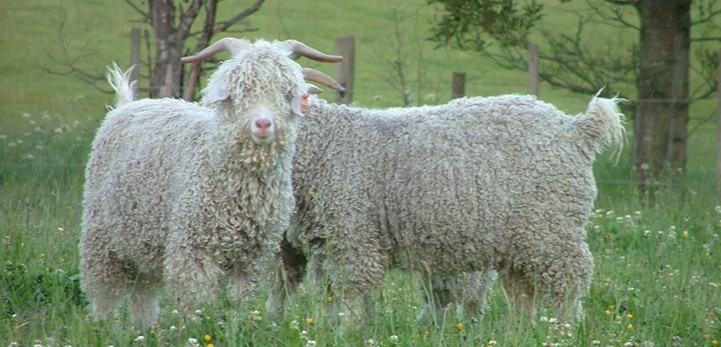Classing Guidelines
It is difficult to give advice about classing particular clips without viewing the Mohair. The following information should be regarded as a guideline only.
Classing is the grading of mohair fleeces according to their individual fibre characteristics of fineness (micron), length, and style.
The valuation of fleeces is based on these fibre characteristics.
The classer’s aim is to separate oddments from fleeces, and then sort fleeces and into lines based on the previously mentioned set of characteristics, with a strong emphasis on uniformity. Degraded fibres should be separated and removed.
The fleece may have to be subdivided into two or more lines. Usually the longest and coarsest mohair occurs on the neck – the britch may often be shorter and contain more kemp whilst the shoulders and flank form the average.
Well-bred goats should have even fibre throughout.
The main two considerations for classing mohair fleeces are fineness and length:
Fineness (micron)
As the age of the goat has a large bearing on the fineness of the fibre which is produced, separation of herds during shearing times will often reflect different age groups. Genetics can also affect the fibres diameter, so care should be taken during classing, with an inspection of all individual fleeces throughout the age groups.
The possible lines for lustrous Mohair are:
Superfine Kid Fleece SFK 26 microns
Fine Kid Fleece FK 30 microns
Young Goat Mohair YG 32 microns
Adult Hair H 34 microns
Strong Adult Hair SH 36 microns
Length
There is importance placed on correctly separating different lengths of fibre into uniform lines, as length is used to decide the final product of the fibres. Length is therefore a fundamental aspect of marketing mohair. The ideal length of fibres is between 90mm and 150mm.
In large lots of Mohair it may be possible to grade the hair into separate lengths, i.e. 150mm, 125mm, 90mm. However in most cases 90mm to 150mm, hair will need to be blended. It is suggested therefore that two lines for length be made:
A – 90mm-150mm
B – Under 90mm
Thus, a long lustrous fleece of 25 microns would be classified as AFK, a short lustrous fleece of 32 microns would be classified as BH, and excessively long hair should be kept separate.
Style and Character
“Style” is the twist of the staple, and “character” is the tightness of the coil. A staple with a good balance of both will look like a beautiful ringlet. A blunt end is more desirable than a tapered end because it shows that the fibre has lasted on the animal from one shearing to the next without any breakages.
While style and character has been found to not affect price to the same extent that fineness or length does, it is still a significant aspect of classing mohair fleeces. Therefore, any fleeces which are found to be lacking style or character should be separated from the main fleece lines.
Pressing and Packaging
Once classed, fleeces should be placed in a fadge (wool bag), arranging roughly 6 fleeces per layer. Between layers, you should place a couple of sheets of newspaper, as a form of separation. Mark each bale carefully and clearly, including; your name, customer number (if you have one), address, and a brief description of what is in the bale (e.g. age of animal, expected fibre micron, and length of fibre) .
The majority of Angora flocks within New Zealand are relatively small, where most farms unable to create classed lines sufficiently large enough to make individual bale lots. In the likely event that there are insufficient numbers of fleeces for full bales, different lines may be added to a bale and pressed (each line to be separated by paper or cardboard), to create a bin bale.
Note: Do not press wet mohair – FIRE HAZARD – stains must be dried before pressing.
A Specification sheet detailing the clip should be completed and forwarded to the selling agent.

